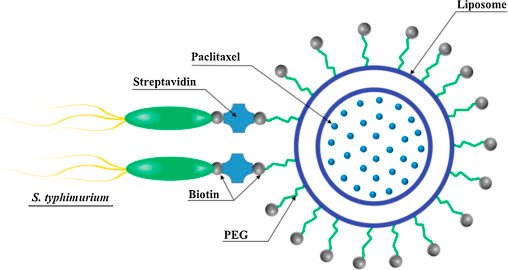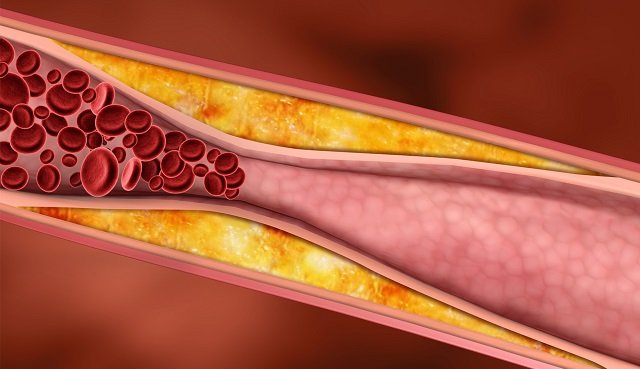Nanorobots. Part 1 - Applications in medicine
Good day friends of Steemit, giving continuity to the previous publication where the novel studies of the nanorobots were discussed as the medicine of the future, then I present several applications that are promising for the advancement of medicine.
Nanorobots. Part 1 - Applications in medicine
Some applications for nanotechnology are the following:
- Fight against cancer
The treatment of cancer is probably one of the main reasons for the development of nanorobots in pharmacy. Oncologists hope to be able to use the nanorobots to treat their patients, as they can act on the level of the tumor cells or tissues selectively, or by destroying the tumor cells by physical methods, with laser emission, microwaves or ultrasonic signals, or Well by chemical methods releasing antineoplastic drugs directly and specifically in tumor cells.
One of the main challenges in the design of nanorobots is to provide them with the capacity to distinguish between different cell types by identifying the antigenic surface, different in each cell type, thanks to chemical sensors. Different levels of E-Cadherin and beta-catenin can be detected in primary and metastatic phases so that the nanorobots destroy only the cells that are in the latter. At present, there are numerous antineoplastic drugs that are characterized because their therapeutic index is reduced, due to their high toxicity in healthy cells, which causes numerous adverse effects.
The nanorobot is introduced into the cancer patient by intravenous injection. After the nanorobot crosses the cell membrane of the tumor cell, the retention of the drug in it will determine the efficacy of the treatment. Changes in the concentrations of proteins near the therapeutic target, such as NOS (nitric oxide synthetase), E-cadherin and Bcl-2, and changes in the temperature of inflamed tissues, are conditions that make Identification of the targets.
In 2015, studies were conducted on so-called nanorobots; bacteriobot, combines a liposome loaded with paclitaxel led by Salmonella Typhimurium bacteria, genetically modified to detect tumor cells. To evaluate the effectiveness of the proposed bacteriobots their motility was first analyzed and they showed a much higher average speed than the liposomes without being coupled to bacteria due to the activation of the flagellar bacteria. In addition, the therapeutic effects were proven and the results revealed that the bacteriobot had superior effects. Finally, their ability to differentiate between tumor cells and healthy cells was evaluated, confirming, with this last result, that a new active drug delivery mechanism for tumor therapy can be constructed using mobile bacteria and drug-loaded liposomes.

Diagram of the bacteriobot
source
- Arteriosclerosis treatment:
In arteriosclerosis, plaques form along the arterial walls. The nanorobots act by destroying the plate, physically removing it from the wall, destroying the plate after the passage of the nanorobot.

Nanorobot in arteriosclerosis
source
- Disintegration of blood clots:
Blood clots cause serious complications from muscle death to apoplexy. The nanorobots can reach the clot and destroy it. This is one of the most dangerous applications in the use of nanorobots.
Acts of obstruction by ensuring that no debris is disseminated into the bloodstream, which could cause Major problems. The robot must be small enough so that it does not block blood flow by itself.
- Help in coagulation
This is the case of artificial platelets or platelets.
The mechanism of action of the lobes is illustrated in the following image.

The clotocito carries a mesh network that dissolves upon contact with the blood plasma in a sticky membrane. The set of loins in place of the hemorrhage to form the membrane that acts as a stopper to stop the loss of blood.
source
• Rupture of kidney stones
Kidney stones can be intensely painful. The bigger the stone, the urine will present greater difficulty to pass through the urinary ducts. One of the methods for its elimination is the use of ultrasounds, but it is not always effective. He nanorobot could break kidney stones by using a small laser incorporated in the nanorobot itself. In addition, it can carry signal generators ultrasonics that releases frequencies directly on kidney stones. As a result, the size of the calculations is reduced to more particles small ones able to cross the ducts and be eliminated by the urine.

An example of the application of nanorobots in the treatment of kidney stones using ultrasonic signals. The remnants of the stones can circulate through the urinary ducts to be eliminated by the urine.
source
- Drop
In this pathology, the kidneys lose the ability to eliminate waste from the metabolism. These residues crystallize in some points near the joints such as the knees and ankles so that patients suffering from gout they experience intense pain in the joints. The nanorobot can break structures crystalline, providing relief from symptoms, although it would not be able to reverse the situation permanently. It does not cure the pathology itself, but if it eliminates the symptoms of the same.
- Monitoring of vital signs
A nanorobot that controls vital signs in the body could be introduced into the body every moment, giving rise to a qualitative leap in the diagnosis of any disease. In this way, it responds quickly in case of a change sudden, warning against a possible risk, such as high blood glucose values in the case of diabetic patients.
- Diagnosis and treatment of diabetes
They can act by transporting glucose molecules through the bloodstream. The hSGLT3 molecule defines glucose levels. The nanorobot for monitoring the glucose uses an anti-serotype of this protein as a sensor. These chemical sensors can effectively determine the need for insulin in the body, and if necessary, a nanorobot could free it.
- Immune system
They contribute to the function of the immune system by finding and deactivating bacteria and viruses. When a foreign agent is identified, the nanorobot can join it, drilling it and destroying it completely, so that it is no longer harmful to the organism.
- Odontology
They are many applications studied: precision controlled oral analgesia, dentin replacement, permanent hypersensitivity cure, realignment orthodontic complex, among others. The central idea is that everything is in a single consultation in which implant a single device that covers everything. They also study mouth rinses with nanorobots that can identify and destroy pathogenic bacteria, being harmless to the bacterial flora of the mouth. Could identify food particles, plaque, tartar and separate them from the teeth for rinsing. Being suspended in liquids and able to swim in it, they could reach more areas deep what the brush or floss is capable of.
- Delicate surgeries
The nanorobots could be used to perform microsurgery on the eye, on the retina, and on the surrounding membranes. Instead of being injected directly into the eye, the nanorobots they could be injected into other parts of the body and be guided to the eye.
In fetal surgeries: one of the riskiest surgeries due to its high rate of mortality of the baby or the mother could be 100% successful because the nanorobots access the required zone without causing traumas.
There are numerous applications of the use of nanorobots in medicine, and although they still object to studies, their advances are promising. The evolution of conventional therapies is necessary due to its innumerable effects adverse events and their high failure rates. At present there are many diseases, especially of a chronic character, that present a high mortality, emphasizing cancer. It is committed to nanotechnology with the use of nanorobots, so those therapeutics reach the advance that technology has achieved in this last century, being aware of the dangers that this would entail if not studied and meticulously rehearsed, pursues its application so that they are effective, safe and of quality. Optimal results have been obtained in the many investigations carried out, so that the use of these nanorobots, so that the drug reaches the therapeutic target without affecting the cellular environment, healthy cells, is what is trusted as an alternative to what that until now has been used to fight the diseases that today have greater morbidity and mortality in the first world.
References: